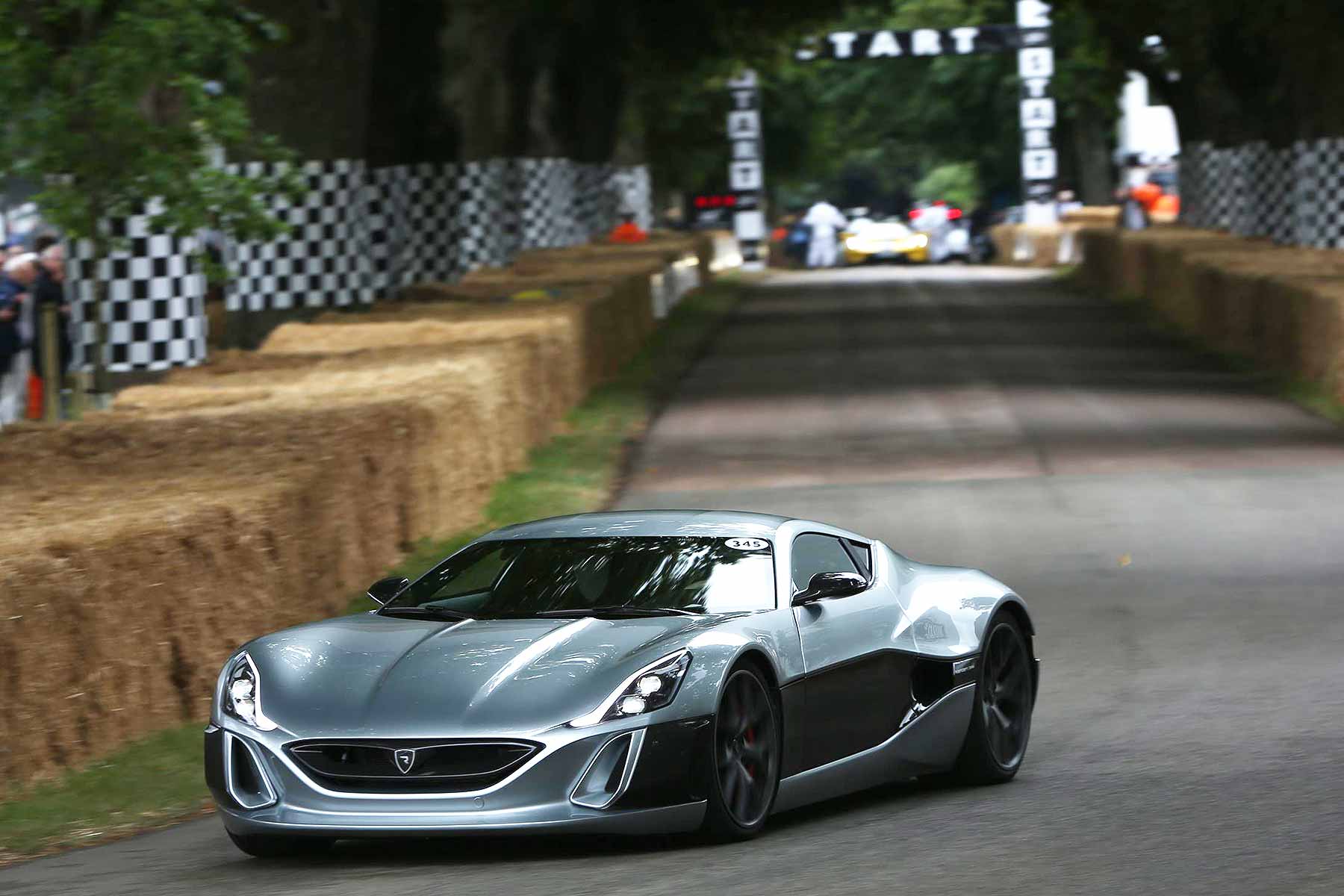 Since Rimac Automobili burst onto the scene at the Frankfurt Motor Show in 2011, world records have been broken, eyebrows have been raised and boundaries have been pushed. And yet, the Croatian company and its Concept One electric hypercar were relatively unknown beyond the confines of the automotive world.
Since Rimac Automobili burst onto the scene at the Frankfurt Motor Show in 2011, world records have been broken, eyebrows have been raised and boundaries have been pushed. And yet, the Croatian company and its Concept One electric hypercar were relatively unknown beyond the confines of the automotive world.
That’s until Saturday 10 June 2017, when Richard Hammond crashed a Concept One during filming for the next season of The Grand Tour. The crash – which took place at the Hemberg Hill Climb in Switzerland – left Hammond with a fractured knee and the car destroyed by fire.
All of a sudden, social media was alight with news about the crash and the Rimac name was thrust into the headlines. We use the word ‘thrust’ with caution, given Hammond’s 2006 crash in jet-powered dragster. But what exactly is the Concept One and why should you care?
More supercars on Motoring Research:
- London’s most exclusive supercar show
- Porsche has launched a 607hp 911 Turbo SI
- Inside the multi-million-pound Porsche showroom
Mate Rimac and his BMW E30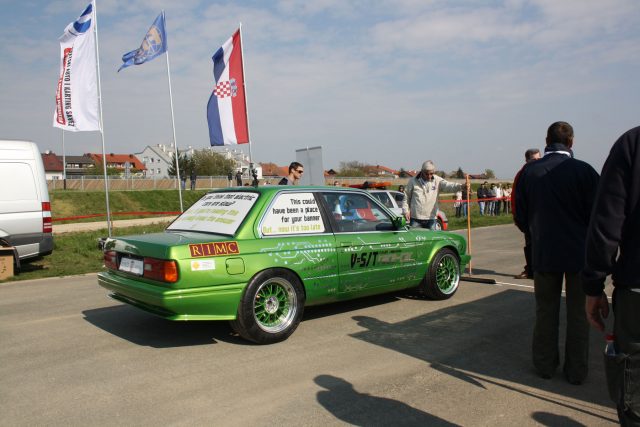
First, a little history. Rimac Automobili is led by 29-year-old Mate Rimac, a Croatian with “a dream that became a reality”. His entry in Forbe’s ‘30 Under 30 Europe’ describes “a company that’s cooler than Tesla”, building “fast and exciting” electric cars.
In 2015, Politico named Mate Rimac as one of the 28 most influential people in the EU – not bad for a man who simply had “a dream that became a reality”. A dream that started with a BMW E30.
The so-called e-M3 was Rimac Automobili’s first test mule – a car Mate Rimac started to convert when he was just 19-years-old. “I owned an old BMW E30 which I used for drift and circuit races,” said Rimac.
“At one of these races, the gas engine blew up. Then I decided to try building an EV. After one year or so the car was able to drive but I was not satisfied with the result. It was heavy, not very powerful and the range was limited.”
He gathered a team of experts to develop his own in-house components, hellbent on taking the idea of an electric racecar to the next level. Today, the same BMW E30 holds five FIA and Guinness World Records, including the fastest ⅛-mile by an electric car.
A seriously rapid E30 is great for social media ‘likes’ and buzz, but it’s not enough to attract investment and it certainly won’t upset the supercar elite. If you thought establishing a new company was tough, try doing it in a former East European country where capitalism remains a dirty word and funding is hard to secure.
But it’s thanks to the Concept One (more on this in a moment), that investment started to flood in. Rimac was encouraged to move production to Abu Dhabi, but the Croat stayed loyal to his home nation, where he employs more than 250 people at a factory on the outskirts of Zagreb.
To think that Mate Rimac felt under pressure to grow a beard in order to make him appear older. In 2016, he told a Croatian TV channel that “when you’re a young entrepreneur you face some difficulty when it comes to your age.
“Being young is not an advantage here, hence the beard. It makes me appear older,” he confessed. Something to think about if you’re preparing a presentation for the next series of Dragons’ Den.
Rimac Concept One
Motor Shows, especially those the size of Frankfurt, are littered with new and exciting concepts, many of which will never see the light of day, so you can understand the level of scepticism surrounding the unveiling of the Rimac Concept Car in 2011.
Croatia isn’t exactly famed for being an automotive powerhouse, so news of a young upstart arriving in Germany accompanied by tales of delivering the world’s first electric supercar failed to grab the headlines. Indeed, Rimac Automobili was relegated to a stand at the back of one of the supplier halls.
The Concept One looked stunning, boasting a carbonfibre body designed by Adriano Mudri and an interior penned by a team of former Pininfarina employees. That the production version looks remarkably similar to the show car should come as no surprise: it looked production-ready, even in 2011.
But it was the technology beneath the skin that really mattered. Rimac Automobili developed a unique powertrain using four electric motors with their own single-speed gearboxes, one driving each wheel, delivering a combined output of 1,088hp.
At the time, this was enough to achieve a 0-62mph time of 2.8 seconds, a top speed of 190mph and a claimed range of 373 miles, assuming you could resist the temptation to test the eye-popping performance figures.
Concept One: the world tour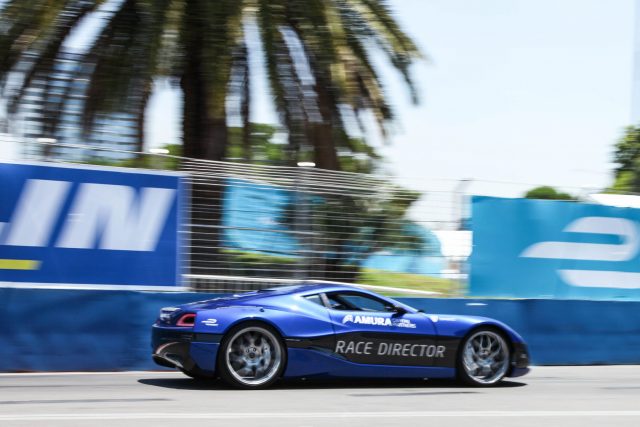
Development continued in 2012, as the Concept One embarked on an electric-powered world tour. First came the super-posh Top Marques Monaco, followed by an appearance at the equally lavish Concorso d’Eleganza at Villa D’Este.
In June 2012, the Concept One took part in a parade at the 24 Hours of Le Mans, where it was selected as the most innovative of all supercars, beating the likes of the Bugatti Veyron, Pagani Zonda, Koenigsegg Agera R and Lamborghini Aventador.
Further events followed, including a UK debut at Salon Privé in September 2012 and, in 2014, news that Rimac would supply a Concept One to the Formula E Championship for use by the Race Director and for passenger laps.
Concept becomes a reality
Until the 2016 Geneva Motor Show, the Concept One was still just that: a concept. But five years on from its motor show debut, Rimac demonstrated that it had staying power and that the Concept One was a car to be taken seriously. In Geneva, the electric supercar was given pride of place within one of the main halls – no supplier section this time.
The styling was largely unchanged, but the technology had been refined to make it even quicker than the 2011 version. The headline figures were compelling: a 0-62mph time a fraction quicker at 2.6 seconds and a top speed of 221mph. Serious credentials, then, but to concentrate on the numbers would be to miss the technical brilliance of the Concept One.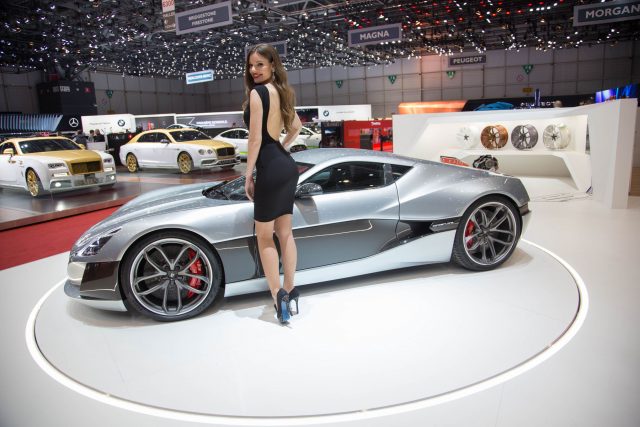
Let’s not forget that almost every component on the electric supercar has been developed in-house by the Rimac team in Zagreb. The CEO’s claim that “the Concept One achieves today what many would think is unachievable, even in the future” is not without justification.
Take the Rimac All Wheel Torque Vectoring (R-AWTV), which uses input from sensors positioned around the chassis and suspension to calculate the optimal torque distribution between the wheels. It means that the Concept One is able to use every last bit of its 1,180lb ft of torque.
The R-AWTV settings can be tweaked via Rimac’s own infotainment system, which also controls the brake force and torque distribution. Users can change the nature of the Concept One, from a neutral setting through to a track-focused and even a drift mode.
The Rimac infotainment system gathers info from more than 500 different sensors, with data stored in the internal memory and sent to the cloud via 4G. It can be analysed during or after a lap via the touchscreen, PC or smartphone.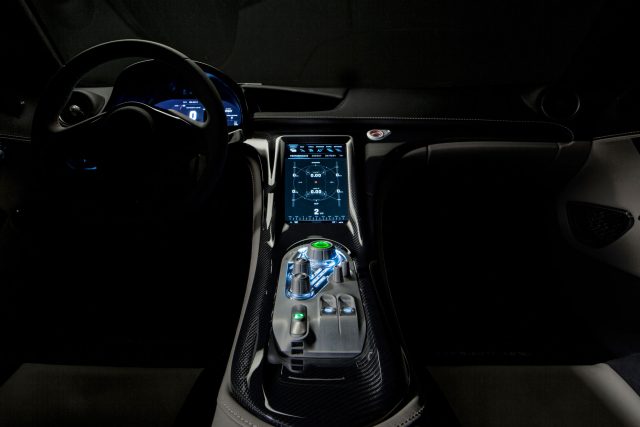
“My goal was not to create an electric version of existing supercars. I wanted to create technology to make the supercar considerably better in every regard – faster, more fun and more efficient. I wanted to make the supercar of the 21st century,” said Mate Rimac.
If Rimac is to be believed, the next generation supercar requires a battery pack designed to deliver 1000kw or 1MW of power during acceleration and to absorb 400kW during braking. A liquid thermal management and low-resistance conducting system was required to master this challenge. Total range of the production version: 330km (205 miles).
As you’d imagine, with four motors, four gearboxes and the array of battery tech, the Rimac Concept One is hardly light. At 1,850kg it’s around 600kg heavier than a LaFerrari and 400kg lardier than a McLaren P1. On the plus side, it’s 145kg lighter than the Bugatti Chiron…
By the time the production version was unveiled in Geneva, Rimac had sold six of the planned eight units. The Croatian firm had done enough to convince wealthy supercar owners that it was the real deal.
Rimac Concept S
But Rimac wasn’t in a mood to stand still. The Concept S is the Concept One’s so-called “Evil Twin”, built to exploit the maximum potential of the torque vectoring system. With 1,384hp and 1,328lb ft of torque, the Concept S is even more hardcore than the hardly soft Concept One.
The 0-62mph time drops to 2.5 seconds, while the 0-124mph (200km/h) figure stands at 5.6 seconds, making it faster than the Bugatti Chiron. The 0-186mph (300km/h) time is an equally impressive Chiron-taming 13.1 seconds.
It helps that the Concept S is 50kg lighter than the Concept One, but the new version is also blessed with an aggressive aerodynamic package, enhancing downforce by 34%. The torque vectoring system has been tweaked to provide a “wide spectrum of extreme setups”.
Rimac Concept One upgrades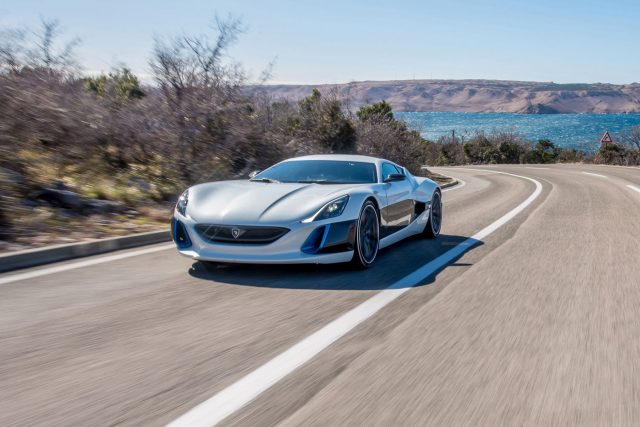
Not to be outdone, a new and improved Rimac Concept One was unveiled at the 2017 Geneva Motor Show. With power increased to 1,224hp, the new version will sprint to 62mph in 2.5 seconds, before hitting the 186mph mark in 14 seconds.
At the same time, the battery capacity was upgraded to 90kWh, with a total range of 350km (217 miles).
“Hundreds of upgrades to almost all vehicle systems were necessary to unleash the Concept One’s full potential.” said Mate Rimac. “Our goal remains to deliver ground-breaking technology demonstrated in our hypercars to like-minded individuals around the world while at the same time being a recognised partner to the global OEMs.”
An example of this includes the battery system supplied for the Aston Martin AM-RB 001, and partnerships with the likes of Koenigsegg, Qoros and W Motors.
From e-Bikes to top-secret prototype cars, Rimac has come a long way since its CEO decided to go hunting petrol-powered cars in a green BMW. Thanks to Richard Hammond, the company is more famous than ever.